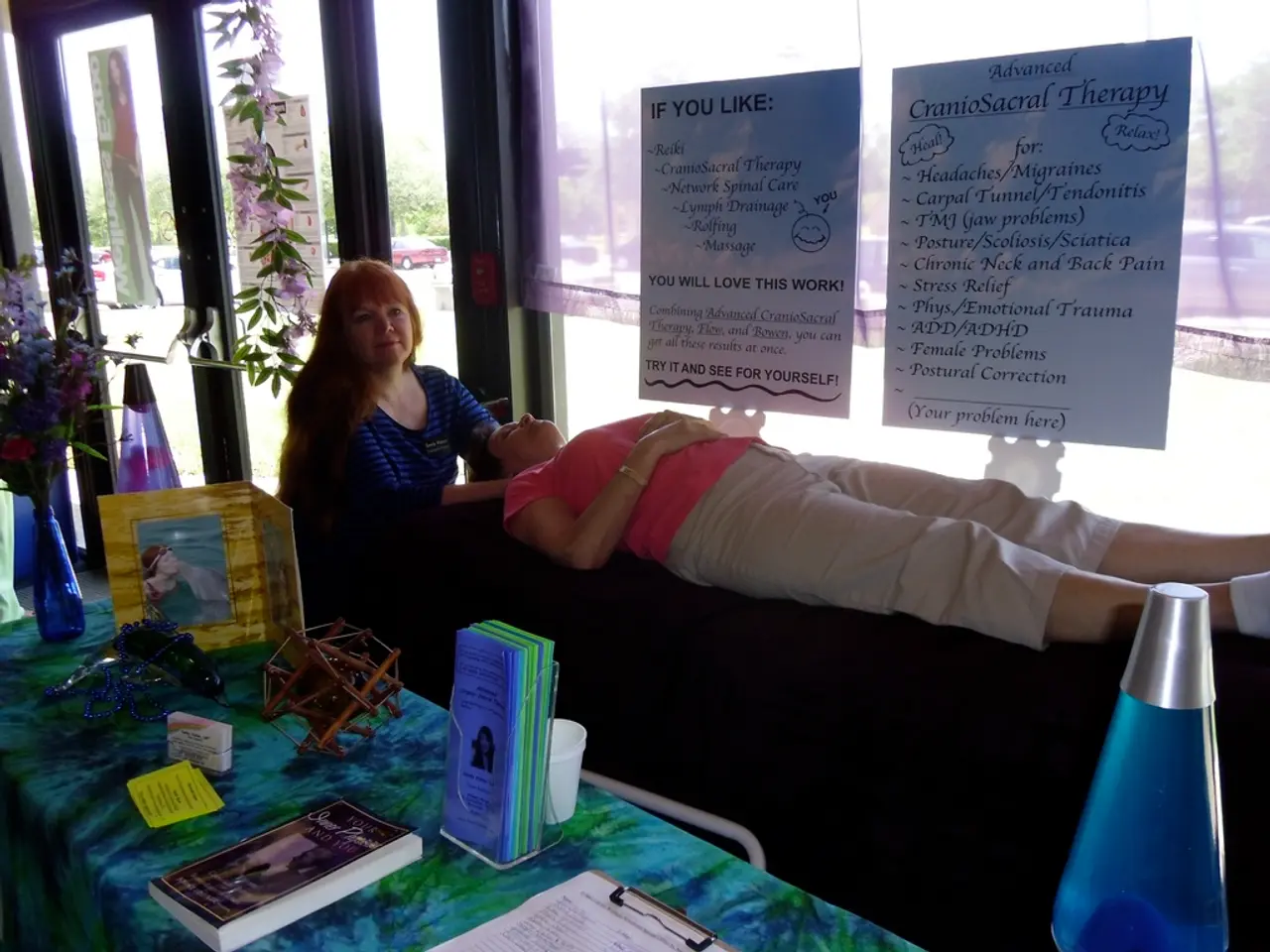Linking Ankylosing Spondylitis to Fatigue: Exploring the Relationship and Beyond
Ankylosing Spondylitis (AS), a chronic inflammatory condition affecting the spine, can lead to a range of symptoms, one of which is fatigue. A recent report suggests that fatigue in AS may be due to thinner gray matter in the brain.
During an AS flare-up, symptoms become more intense, including increased back pain, back stiffness, reduced flexibility and mobility, and increased fatigue. This persistent feeling of tiredness and lack of energy often goes beyond normal tiredness, affecting a person's emotions, functional ability, quality of life, and ability to maintain employment.
People with AS-related fatigue may experience brain fog, difficulty concentrating, heavy limbs, muscle weakness, reduced endurance, and being unable to complete work responsibilities in the allotted time. Inflammation is another factor that may cause fatigue in AS, as it causes a change in how the body uses and produces energy.
Several factors may contribute to the occurrence of fatigue in AS, including disease severity, level of pain, level of stiffness, low mood, reduced physical activity, poor diet, disrupted sleep patterns, medications, and inflammation. According to a 2019 study, about 32% of people with AS have severe fatigue.
To manage fatigue, planning and conserving energy is important. This can be achieved by breaking tasks into manageable segments, taking frequent breaks, and avoiding overexertion. Staying physically active, with an exercise program tailored to the individual's needs, can help alleviate symptoms of AS and manage fatigue.
Maintaining a balanced lifestyle is crucial. This includes a nutritious diet, regular hydration, avoiding smoking and drinking alcohol to excess, and possibly working with an occupational therapist. Prioritizing sleep and rest can also help, including establishing a regular sleep schedule, creating a comfortable sleep environment, taking rest breaks during the day, and listening to the body's signals for rest.
Tips for coping with ankylosing spondylitis fatigue may include pacing oneself, prioritizing rest, managing stress, maintaining a healthy diet, and working with a healthcare provider to adjust medication regimens.
By controlling inflammation through disease-specific therapies (such as anti-TNF agents) and combining these lifestyle modifications, patients with AS can better manage fatigue and improve quality of life. Regular physical activity, sleep hygiene and pain management, posture and ergonomics, and stress reduction techniques are all important components of managing fatigue in AS.
If you are experiencing persistent or worsening fatigue, new or severe symptoms, or if fatigue affects your daily life, it is important to contact a doctor. This will allow the doctor to assess possible underlying causes and adjust the treatment plan if necessary.
References:
- https://www.ncbi.nlm.nih.gov/pmc/articles/PMC6141395/
- https://www.ncbi.nlm.nih.gov/pmc/articles/PMC5789121/
- https://www.ncbi.nlm.nih.gov/pmc/articles/PMC5789121/
- https://www.ncbi.nlm.nih.gov/pmc/articles/PMC6141395/
- The study published in 2019 highlights that approximately 32% of people with Ankylosing Spondylitis (AS) grapple with severe fatigue, a symptom associated with various other chronic diseases and medical-conditions.
- Managing fatigue in AS involves practices focused on health-and-wellness, fitness-and-exercise, and mental-health, such as planning energy usage, maintaining a balanced lifestyle, and working with professionals like occupational therapists.
- To mitigate fatigue triggered by inflammation and improve quality of life, AS patients can turn to science-backed measures like disease-specific therapies, regular physical activity, sleep management, pain relief techniques, and stress reduction practices.




